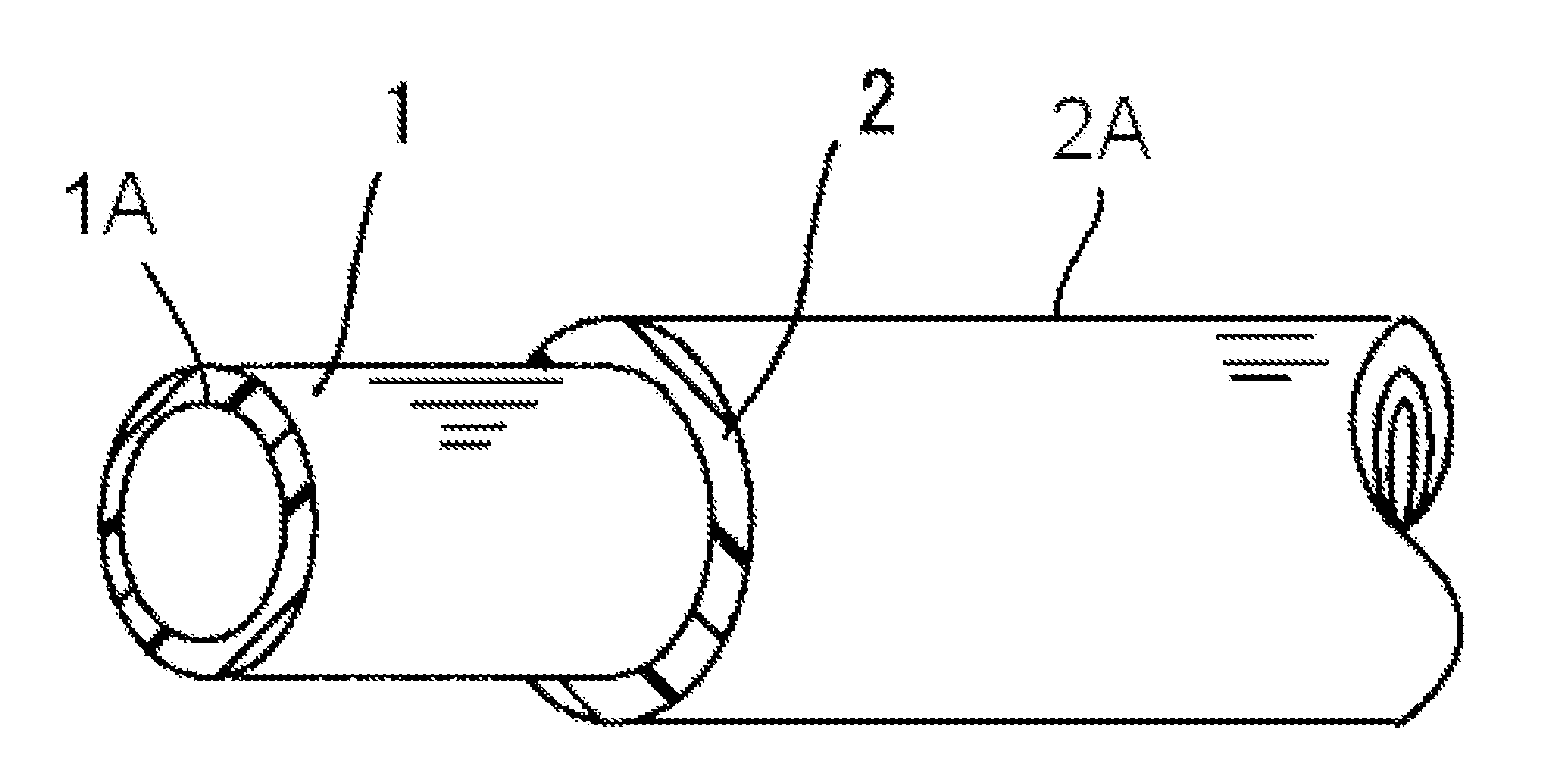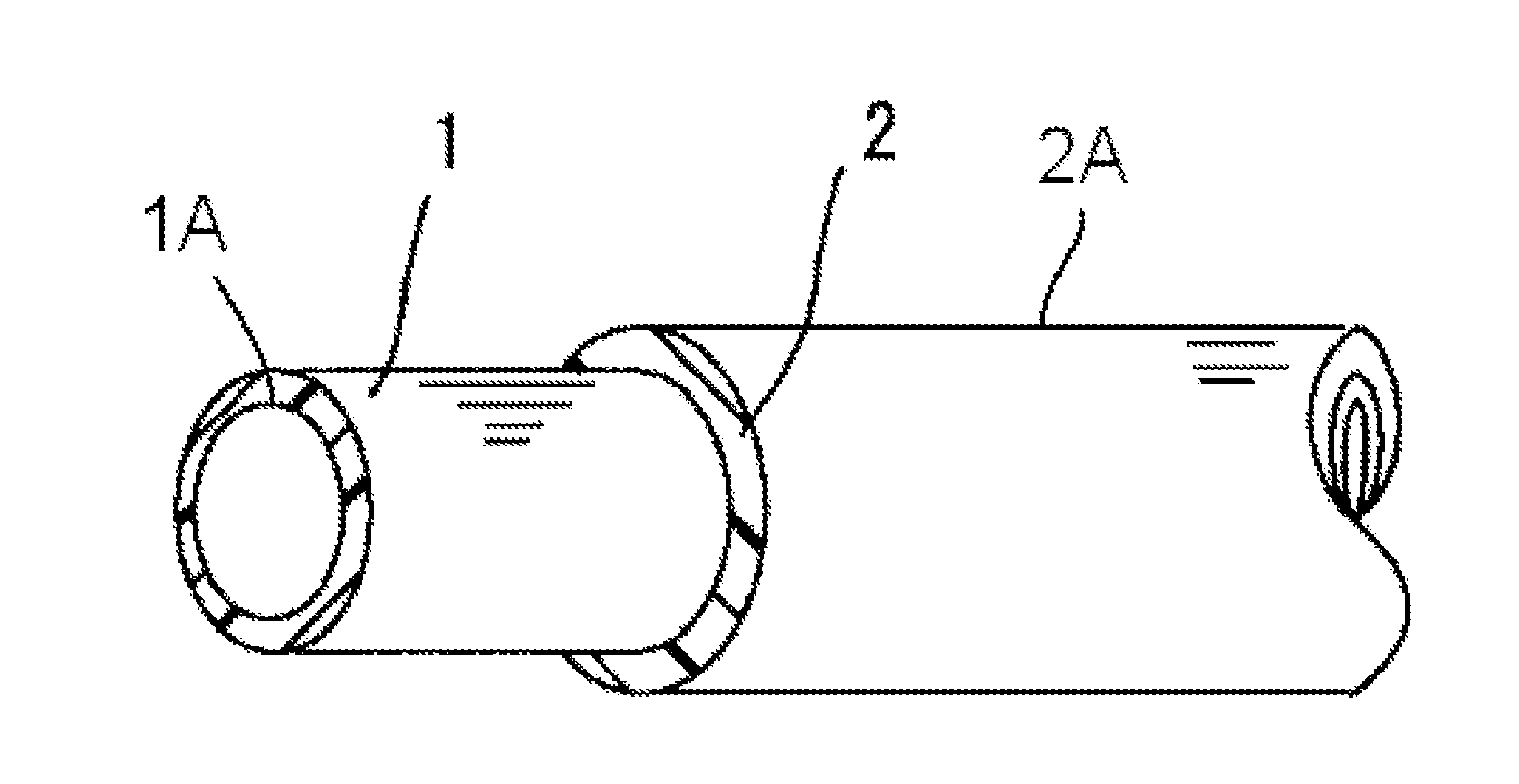[0005]An aromatic polyamide resin such as PA9T that particularly has good low fuel permeability and is used as a material for hoses has high rigidity. A single layer hose composed of only the aromatic polyamide resin has poor flexibility and, particularly, is vulnerable to a shock at low temperature, which easily causes the breakage of hoses. To solve the problem, there has been considered a hose having a
layered structure in which the thickness of the aromatic polyamide resin layer is decreased and an outer layer composed of a flexible
thermoplastic resin such as an aliphatic polyamide resin or a
polyethylene resin is formed on the outer
peripheral surface of the aromatic polyamide resin layer. However, the aromatic polyamide resin has poor adhesion with other materials. When the aromatic polyamide resin layer, that is, an inner layer and the outer layer are laminated with each other, an
adhesive layer normally needs to be formed at an interface between the
layers. This poses problems in that the production process becomes complicated due to the formation of the
adhesive layer and the weight of hoses is increased.
[0009]The inventors of the present invention have eagerly studied to solve the problems above. Regarding the hose having a
layered structure in which an outer layer composed of an aliphatic polyamide resin such as PA12 is formed on the outer
peripheral surface of an inner layer composed of an aromatic polyamide resin such as PA9T having good low fuel permeability, the inventors have focused on an improvement in the interlayer adhesion between the inner layer and the outer layer. In the process of the study, the inventors have found that poor interlayer adhesion between the inner layer and the outer layer in the above-described hose is caused, for example, due to the following reason. That is, the
amide bond (—CONH—) of the aliphatic polyamide resin serving as a material for the outer layer is easily cleaved (—CO NH—) through
heat fusion during
melt extrusion whereas the
amide bond of the aromatic polyamide resin serving as a material for the inner layer is not easily cleaved only through
heat fusion. As a result of further study, the inventors have found the following and have completed the present invention. That is, by blending a certain
organic acid salt (
organic acid salt having 8 to 24 carbon atoms) in the material for the inner layer, the
amide bond of the aromatic polyamide resin serving as a material for the inner layer is easily cleaved (the organic
acid salt is dissociated by heat during molding
processing, and an acid generated through the dissociation of the organic
acid salt easily causes the cleavage of the amide bond). Near the head of an extruder, the —CO and NH— obtained by the cleavage of the
amide bonds of both the
layers form
amide bonds again in the inner layer, in the outer layer, and between the inner layer and the outer layer (amide-converting reaction). Therefore, a desired interlayer adhesive strength is achieved.
[0010]As described above, the fuel hose of the present invention includes a tube-shaped inner layer made of a resin composition that contains an aromatic polyamide resin, such as PA9T, as a main component and an organic
acid salt having 8 to 28 carbon atoms; and an outer layer made of a resin composition that contains an aliphatic polyamide resin as a main component. Therefore, the fuel hose of the present invention is a lightweight fuel hose having good interlayer adhesion, low fuel permeability, flexibility, low-temperature
shock resistance, and
heat resistance. In the fuel hose of the present invention, the
layers can be bonded to each other without using an adhesive and the cost of materials is low. Thus, a fuel hose with high performance can be produced at low cost.
[0011]When the fuel hose further includes an innermost layer on an inner peripheral surface of the inner layer, the innermost layer being composed of a
fluorocarbon resin, better low fuel permeability is achieved.
 Login to View More
Login to View More 

